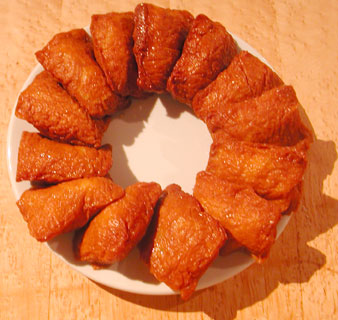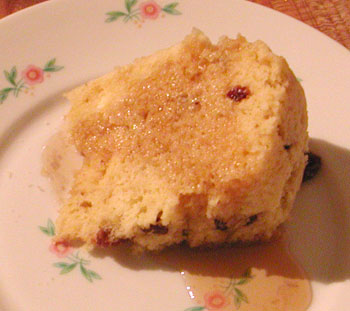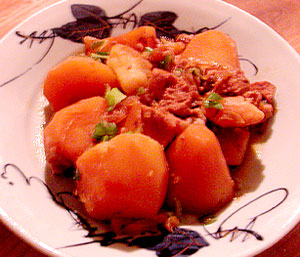A reminder to those of you lucky enough to live in a town with good sushi: This is tuna season! Tuna that is caught in colder waters now has a lot of fat on it, so if you like the fattier cuts such as chu-toro and o-toro, then this is the time for you.
While we are at it, here is how I judge a good sushi restaurant, wherever it is.
Filed under:
japanese restaurants sushi
I have sadly neglected this site, and also the email and comments received. All I can say is bad on me. Anyway, I have received several emails about Japanese food, and I'd like to answer them here in the hopes that it can help more then one person at a time.
Q. How do I make tonkatsu sauce?
Filed under:
japanese ingredients answering questions

Note: This article has been substantially improved and updated here, but I'm leaving this original as-is for the simpler approach using canned skins.
[Another update: Lower-calorie inarizushi filled with a mixture of rice and hijiki seaweed
Filed under:
japanese rice sushi tofu
I’ve got an amazing bottle in my refrigerator now. It’s filled with a mixture that forms the base for just about any sort of Japanese food. It takes all the drudgery out of making a clear soup, or a Japanese style stew, or the dipping sauce for noodles. I can’t live without it anymore.
Filed under:
basics japanese sauce

For Japanese kids, oyatsu is a big part of the day. It means snack time, and is usually in mid-afternoon. It's sort of like afternoon tea or elevenses in England. My mother usually was working when we were growing up so she didn't have much time to make us homemade oyatsu, but when she did one of the things she'd make was mushipan.
Filed under:
bread japanese snack quickbread cake
Previously, I wrote about yohshoku, or Japanese-style western cuisine. Prompted by a question from Elise, I've done a bit more research on this. (Much of this is gathered from a book in the Just Look Just Cook cookbook series from Yomiuri Shimbun Co., called "Yoshoku in Japan". (Note that it can be spelled Yohshoku or Yoshoku.))
Filed under:
basics japanese yohshoku

There is a category of cooking in almost every cuisine, "mother's cooking". It means something that's simple, homely, filling, and invokes strong feelings of nostaliga. In Japanese this is called ofukuro no aji (mother's flavor). Nikujaga, or stewed potatoes with meat, is one of the mainstays of Japanese-style mother's cooking.
Filed under:
japanese potatoes favorites beef
Pages